With over 20 years of experience in embroidery, artisan Nguyen Thi Hang understands the sophistication and cultural value of this craft. However, she has also witnessed a clear decline in the vitality of traditional craft villages.
Discussing with her husband (owner of the Hang Khoa Art brand, Nguyen Thai Hoc, Hanoi ), she decided to open a workshop to practice her craft right at her family's painting shop. Initially, she opened short-term classes for housewives, civil servants, and students who love handicrafts to preserve the craft and spread the love for hand embroidery.
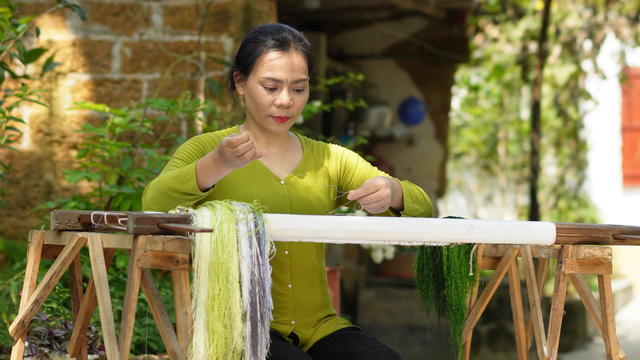
Devoted to her profession, unable to bear to see traditional art fade away, artisan Nguyen Thi Hang opened embroidery classes hoping to connect the culture of the craft village with modern fashion , creating a "playground" for both craft lovers and practitioners.
In addition to the mass classes, there are classes for "experts" such as designers, students who need to do graduation projects, brand owners, and fashion companies. From being experts in hiring embroiderers to make products, the "bosses" become... students of the "village workers".
Designer Ta Thuy (Ta Thuy Ao Dai brand, Long Bien, Hanoi) said that she has always ordered workers to embroider her ao dai. Recently, customer demand has changed, requiring more vibrant and sophisticated products. Therefore, to innovate, Ms. Thuy went to the artisan's class.
"There are many interesting differences. First is the dedication of those who were born and raised in the working atmosphere of the craft village. Next is the meticulousness, care and refinement in every needle and thread. Especially the thorough understanding of the origin of each type of pattern and motif - in the way of the village craftsmen (each type is associated with a vivid cultural story). That gives me more creative energy and inspiration to create," designer Ta Thuy shared.
"The way experienced craftsmen choose thread and mix colors not only contains practical experience but also their love for the profession. It makes each petal and leaf more real and vivid. This is difficult to achieve in modern, industrial classrooms," designer Ta Thuy continued.
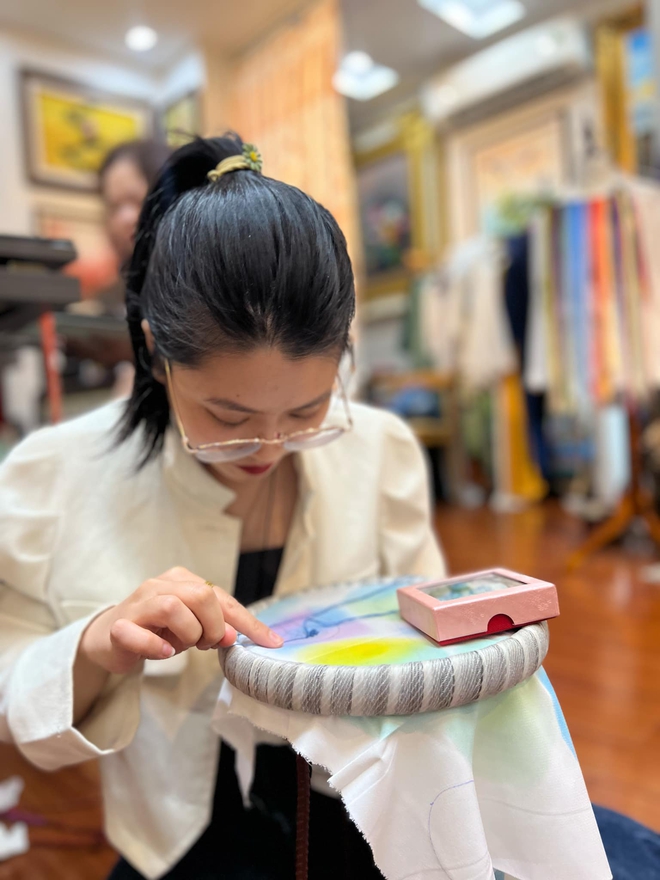
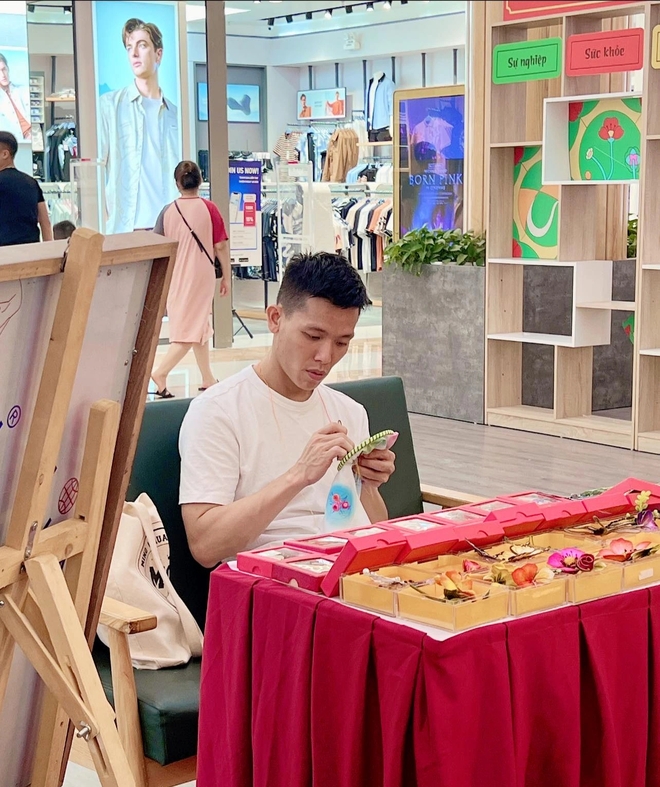
Ancient hand embroidery art is very attractive to young people.
Inspire
Considered a new trend in the fashion industry, classes for professionals in the fashion industry cost between $700 and over $1,000. Not only are these classes a place to teach hand embroidery techniques, they also serve as a bridge to bring designers, brand owners, and students closer to the craft villages and local culture.
Students learn from basic to advanced embroidery techniques, are shared with the village’s craft secrets, and go on field trips to explore local customs and lifestyles. Through this, they understand the profound meaning of each traditional motif and pattern, apply them better to the product, and make the product more soulful thanks to its practicality.
According to artisan Nguyen Thi Hang, hand decoration and embellishment are important skills for fashion professionals. These classes are not only a place to learn techniques but also help young people in the industry explore the foundation of traditional aesthetics, building a sustainable source of inspiration for their creative path.
PHOTO: ARTIST NGUYEN THI HANG
Classes of artisans and craftsmen with vivid practical knowledge, adding a source of "life inspiration"
For students, especially those who are completing their graduation projects or looking for a new direction, the artisans’ class is a useful practical experience. They not only learn embroidery techniques but also visit the workshop, hear about the history of the craft village and discover the beauty of traditional culture.
Ms. Thu (embroiderer in Hoanh village, Dong Tam commune, My Duc district, Hanoi) shared: "Many young students, through acquaintances and online information, come to the village to learn the profession from us. No need for tables, chairs, or books, right at the embroidery frames we teach them how to apply each pattern and motif on each type of fabric, according to each different embroidery style and stitch. Having worked in the profession for more than 20 years, I see more and more people coming to the village to learn. They want to see the reality with their own eyes, witness the bustling work pace of our village. Practical learning takes little time but is highly effective."
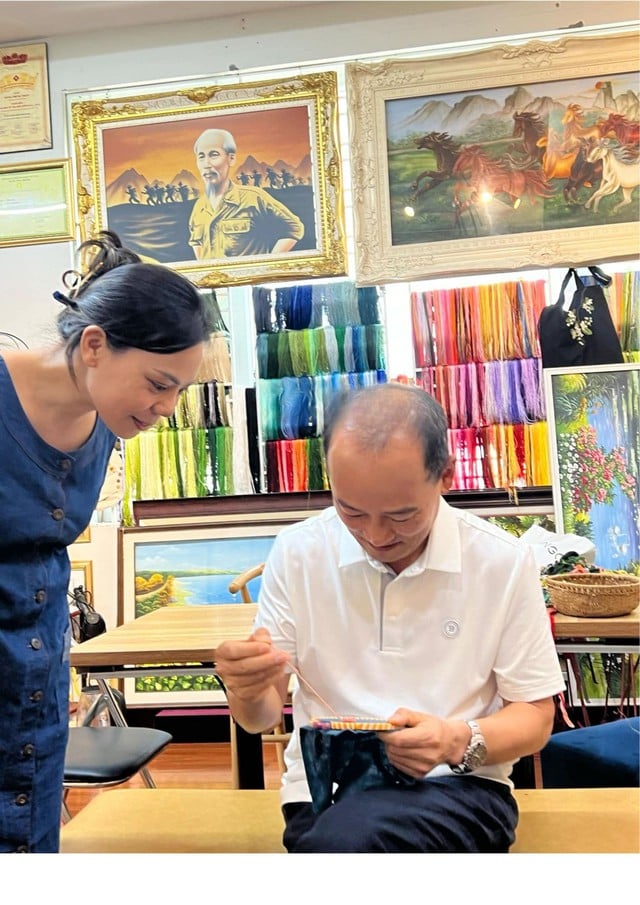
Artisan Nguyen Thi Hang teaches embroidery to Mr Choi (Korean)
PHOTO: ARTIST NGUYEN THI HANG

Father and son Nguyen Van Toan (Vietnamese New Zealander) experience ancient embroidery art
PHOTO: ARTIST NGUYEN THI HANG
"Many young overseas Vietnamese and international fashion students also come to the class. They take advantage of their vacations to return home and study enthusiastically. I believe that the knowledge about traditional culture and fine arts that I have accumulated and shared will be a solid foundation for them to confidently introduce to international friends," said artist Nguyen Thi Hang.
Not simply a course, the "thousand dollar" class with practical sessions at artisan villages is also a cultural bridge, helping to preserve and develop the value of traditional hand embroidery villages in the context of the intersection of tradition and modernity, between local culture and international trends.
Source: https://thanhnien.vn/thoi-trang-tre/nghe-nhan-lang-theu-gioi-tinh-yeu-nghe-o-lop-hoc-ngan-do-185241121193633302.htm







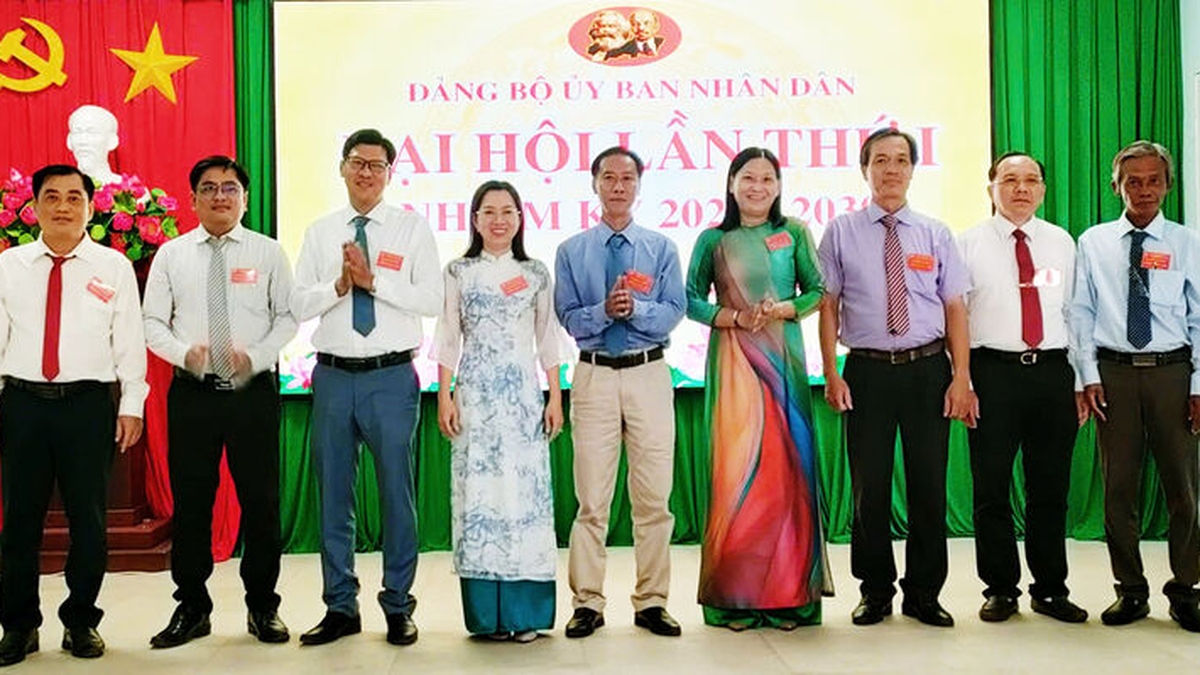



![[Photo series] Close-up of the bridge worth over 1.6 trillion VND and the road connecting Dong Nai with Ho Chi Minh City preparing to open to traffic](https://vphoto.vietnam.vn/thumb/1200x675/vietnam/resource/IMAGE/2025/7/30/e8806165b0a240c0b8f139f6f22f3a8a)



















![[Photo] National Assembly Chairman attends the seminar "Building and operating an international financial center and recommendations for Vietnam"](https://vphoto.vietnam.vn/thumb/1200x675/vietnam/resource/IMAGE/2025/7/28/76393436936e457db31ec84433289f72)
















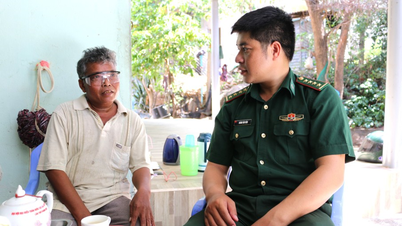



























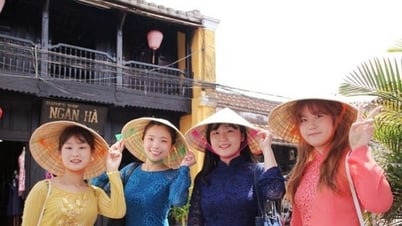













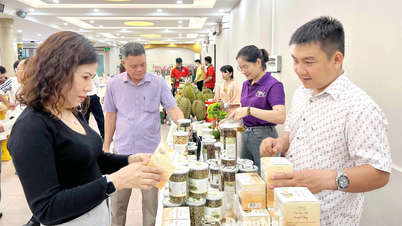





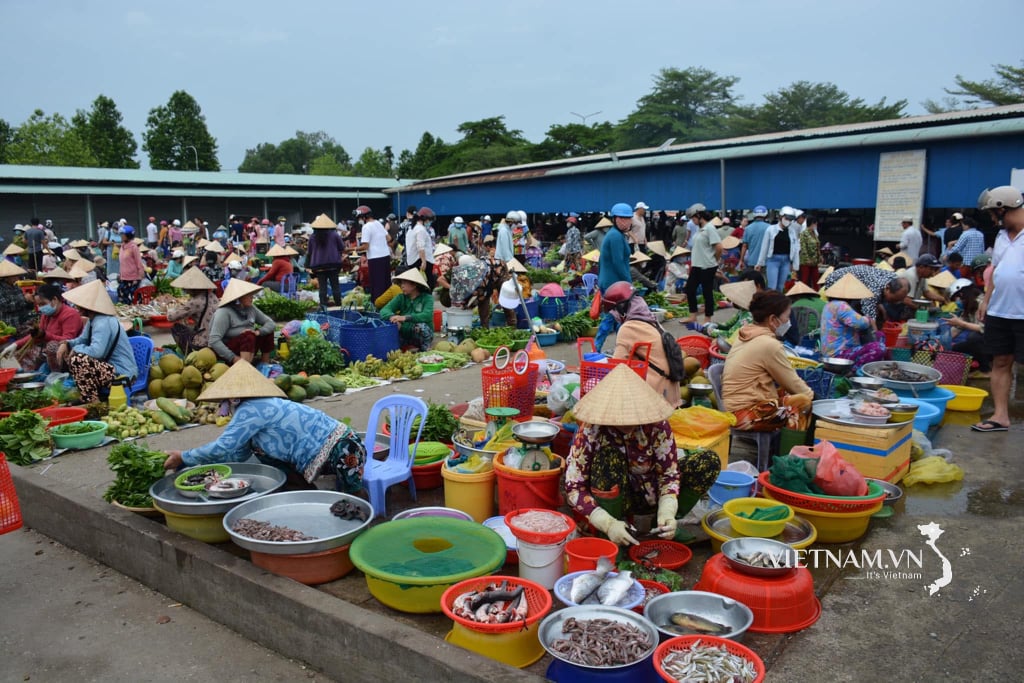

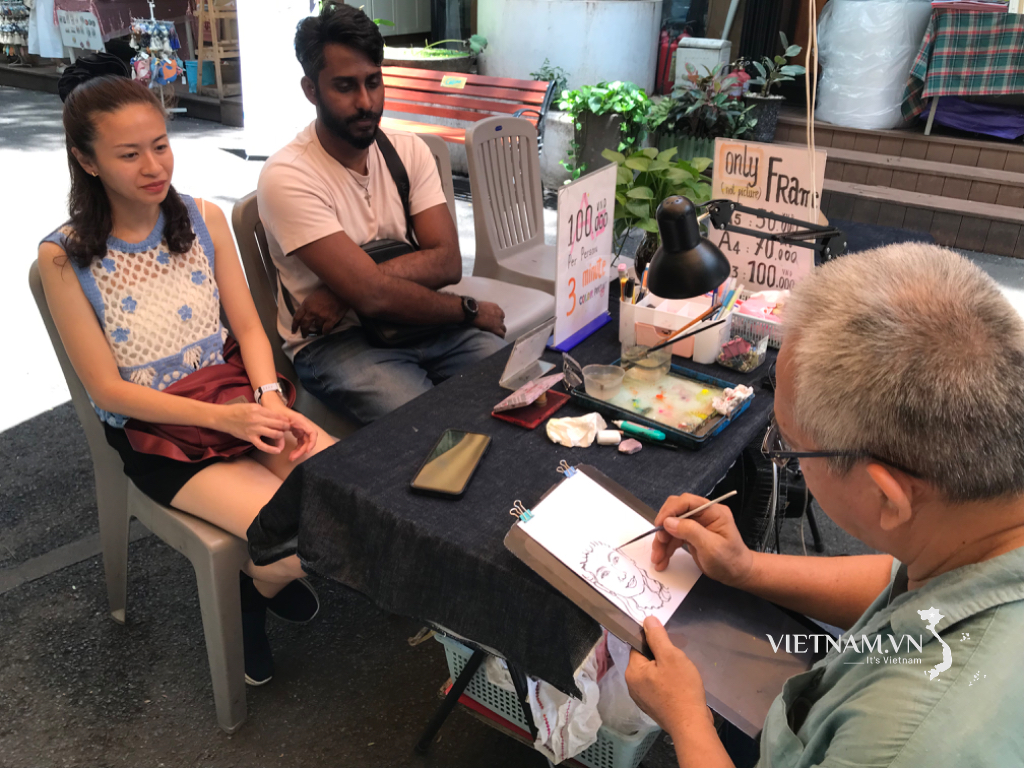
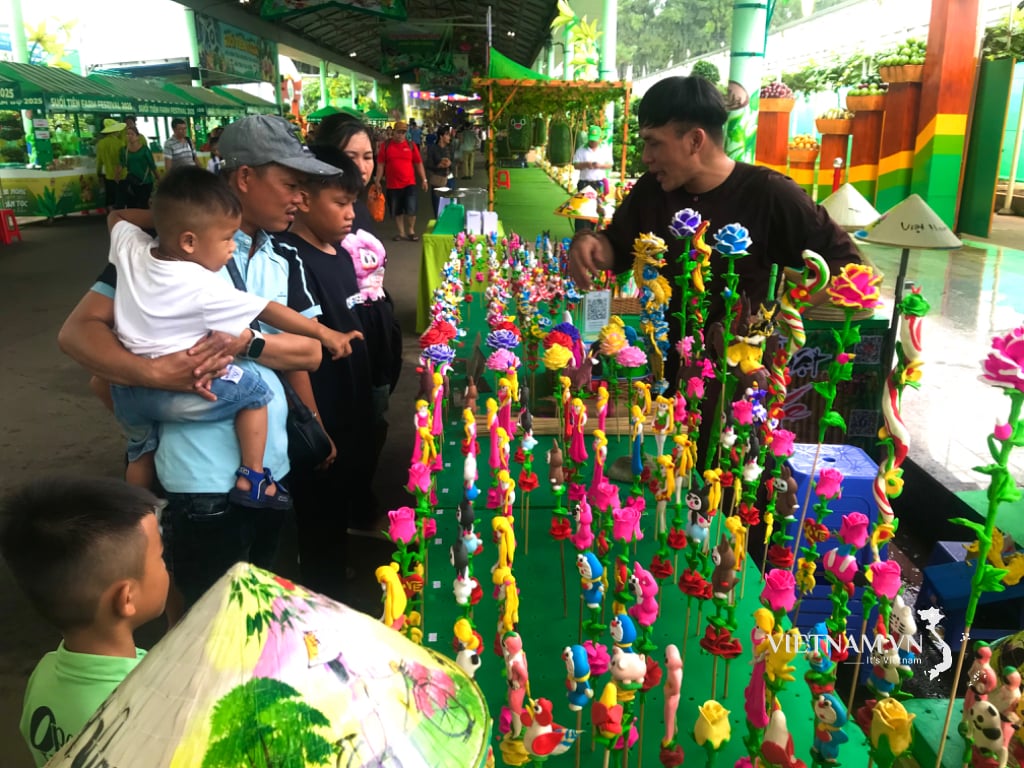
Comment (0)